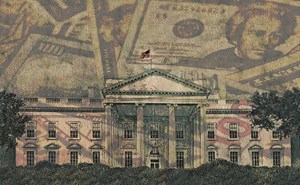Last week, President Trump announced his long awaited “America First Health Plan.” The plan primarily came in the form of a long executive order (EO) that attempts to lay out the Trump Administration’s health care priorities and vision going forward.
Digging through the EO, much of it is old news. It highlights previous EOs and actions to:
- promote price transparency;
- advance and encourage short-term limited duration health plans and other less expensive (but less comprehensive) private insurance options;
- increase the use of telehealth during the COVID-19 public health emergency; and
- lower drug costs.
The EO also discusses the President’s concerns with the Affordable Care Act (ACA) and calls out the specific changes to the law that Congress has already enacted, including repealing the individual mandate, the Independent Payment Advisory Board (IPAB), and the “Cadillac” tax on certain employer-sponsored health insurance.
Moving on to what’s both old and new, the EO references previous steps the administration has taken to address surprise medical bills, including creating a term and condition tied to the Provider Relief Fund that prohibits recipients of the funds from balance billing patients with presumed or actual cases of COVID-19. However, the EO does not propose a long-term solution to the issue. Instead, the President calls on Congress to come to an agreement and pass legislation by the end of the year. If Congress fails to develop a legislative solution, the EO requests that the “Secretary of Health and Human Services… take administrative action to prevent a patient from receiving a bill for out-of-pocket expenses that the patient could not have reasonably foreseen.” In other words, if Congress doesn’t act, the Department of Health and Human Services (HHS) must issue a regulatory fix—but it is unclear what approach HHS would take or what specific regulatory authority HHS could use to do so.
With respect to the ACA, the President has repeatedly stated that he will protect individuals with pre-existing conditions if the ACA is declared unconstitutional by the Supreme Court. The EO again reaffirms this promise but does not state exactly how the administration could do this without a legislative fix. HHS Secretary Alex Azar has since clarified that Congress would need to step in and protect individuals with pre-existing conditions if in fact the ACA is overturned.
Finally, on to what is truly new. Two policies stood out to me as novel ideas. First, building off previous price transparency initiatives, the EO requires HHS to update the Medicare Hospital Compare website that assesses hospitals’ quality performance with the following information:
- Whether a hospital is complying with the new requirement that it post negotiated rates with insurers;
- Whether a hospital is providing patients who are discharged with an itemized receipt of all the services they received during their stay; and
- How often a hospital pursues legal action against patients, including garnishing wages, placing a lien on a patient’s home, or withdrawing money from a patient’s income tax refund.
Second, the President announced that 33 million Medicare beneficiaries would soon receive a $200 “drug discount card” to help them afford prescription drugs. The administration has not formally revealed many details about this initiative up to this point, but it has tried to address how it will pay for this (it is estimated to cost $6.6 billion) and what authority it will use to issue the cards.
HHS plans to use a special demonstration authority called 402 waiver authority that allows the Centers for Medicare & Medicaid Services (CMS) to test alternative Medicare payment approaches. This authority is now rarely used since the ACA created the Center for Medicare & Medicaid Innovation (CMMI) to develop and test Medicare and Medicaid alternative payment models. Under 402 waiver authority, any demonstration that CMS chooses to pursue cannot result in an increase in Medicare spending. The costs for running the demonstration are paid out of the Medicare Trust Funds, so it’s definitely important to ensure that overall Medicare spending under the demonstration is not higher than it would have been otherwise.
Thus, the million-dollar (or in this case, billion-dollar) question becomes: how does providing 33 million Medicare beneficiaries with a $200 prescription drug card not result in an increase in Medicare spending? The administration has a creative answer to this one. It first claims that it will offset any increases in spending by the savings that are achieved through the implementation of the “favored nation” drug demonstration—a demonstration that has yet to be developed. Further, the administration believes that providing $200 to beneficiaries to pay for their prescription drugs may in fact result in lower health care spending by helping beneficiaries adhere to their medication regiments and avoid any unnecessary inpatient admissions that could occur if they fail to take their prescribed medications.
It will be interesting to see whether the administration’s hypotheses for cost-savings from this initiative come to fruition. And, when it comes to the other old and new policies included in the President’s health care plan, in most cases, their ultimate success or failure really falls outside of the administration’s control. Going forward, it appears that the Supreme Court and Congress will in fact have the largest role in shaping the future of health care in this country.
Until next week, this is Jeffrey saying, enjoy reading regs with your eggs, and tune in today at 3pm ET during our live Capital (30) Minutes to hear more about our federal advocacy efforts and to get your questions answered!






